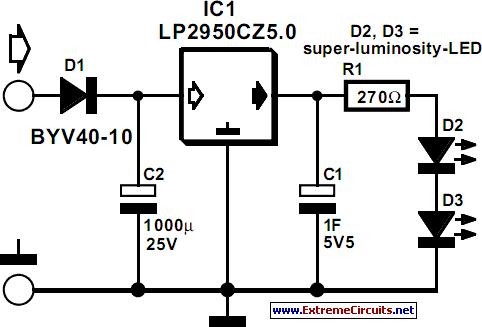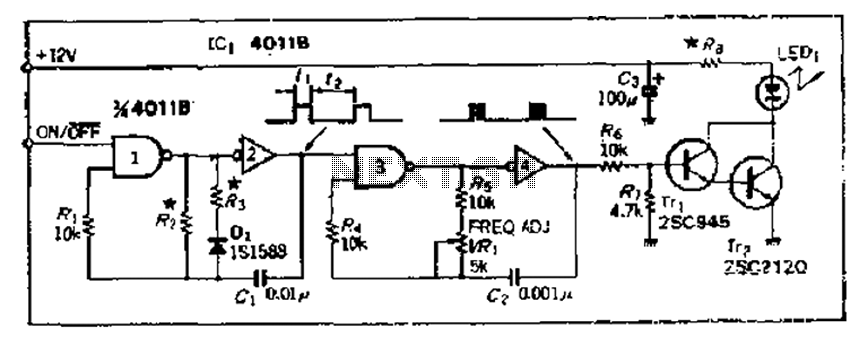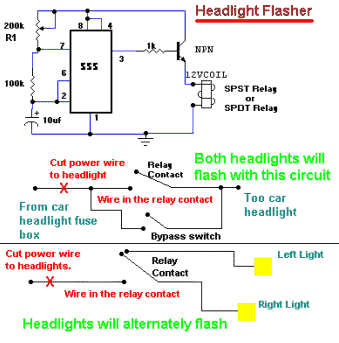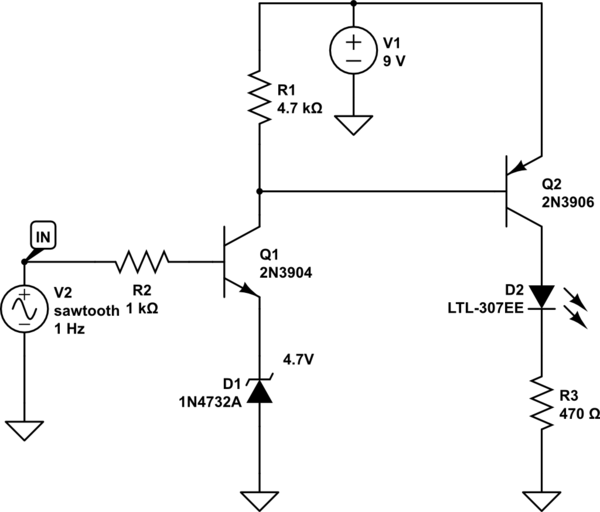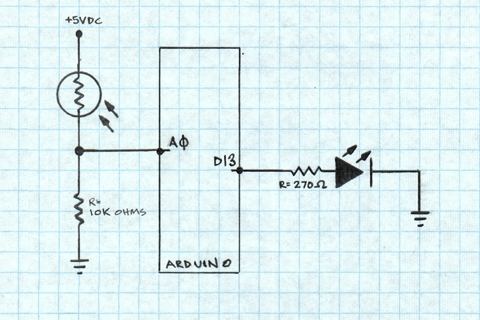
Schmitt trigger light

The circuit utilizes the 555 timer as the core component, incorporating a photosensitive resistor (RG) and a resistor (RP1). The resistance of RG varies with light intensity, affecting the reset and set thresholds. The internal structure includes two comparators within the 555 timer, allowing it to function as a Schmitt trigger. When light intensity is high, RG exhibits low resistance, causing pin 2 to drop below the 1/3 VDD trigger level, which sets the 555 timer and keeps the output (K) inactive. Conversely, when light intensity is low, RG presents high resistance, raising pin 6 to the 2/3 VDD threshold level, which resets the 555 timer and activates the output (K).
The circuit design leverages the 555 timer's ability to operate as a Schmitt trigger, providing hysteresis that stabilizes the output in the presence of fluctuating light conditions. The photosensitive resistor (RG) is a critical component that responds to varying light levels, with its resistance decreasing as light intensity increases. This behavior allows the circuit to respond dynamically to changes in ambient lighting.
In this configuration, the 555 timer is powered by a voltage supply (VDD). The two comparators are set to trigger at different voltage levels—1/3 VDD and 2/3 VDD—enabling the circuit to maintain a stable output state despite minor variations in light intensity. The output pin (K) is connected to an external load, which may be an LED or another device that requires activation based on light levels.
The circuit's operation can be summarized as follows: Under bright light conditions, RG's resistance decreases, causing pin 2 of the 555 timer to register a low voltage, thus setting the output low and keeping the connected load in an off state. As the light diminishes, RG's resistance increases, leading to a voltage rise at pin 6. Once this voltage exceeds the 2/3 VDD threshold, the timer resets, and the output pin (K) transitions to a high state, activating the load. This functionality allows the circuit to serve as an effective light-sensitive switch, responding appropriately to changes in environmental light. As shown, the circuit 555 as the core, and the composition of the photosensitive resistor RG and RP1 like. RG strength with light exhibit different resistance, reset and set th e internal feature uses two comparators 555, and may form a Schmitt trigger. When the light intensity, RG showed low resistance, 2 feet was low ( 1/3 VDD trigger level), 555 set, K does not operate; when the light is weak, RG showed a high impedance, 6 feet high level 2/3 VDD to the threshold level, the reset 555, K pull.
The circuit design leverages the 555 timer's ability to operate as a Schmitt trigger, providing hysteresis that stabilizes the output in the presence of fluctuating light conditions. The photosensitive resistor (RG) is a critical component that responds to varying light levels, with its resistance decreasing as light intensity increases. This behavior allows the circuit to respond dynamically to changes in ambient lighting.
In this configuration, the 555 timer is powered by a voltage supply (VDD). The two comparators are set to trigger at different voltage levels—1/3 VDD and 2/3 VDD—enabling the circuit to maintain a stable output state despite minor variations in light intensity. The output pin (K) is connected to an external load, which may be an LED or another device that requires activation based on light levels.
The circuit's operation can be summarized as follows: Under bright light conditions, RG's resistance decreases, causing pin 2 of the 555 timer to register a low voltage, thus setting the output low and keeping the connected load in an off state. As the light diminishes, RG's resistance increases, leading to a voltage rise at pin 6. Once this voltage exceeds the 2/3 VDD threshold, the timer resets, and the output pin (K) transitions to a high state, activating the load. This functionality allows the circuit to serve as an effective light-sensitive switch, responding appropriately to changes in environmental light. As shown, the circuit 555 as the core, and the composition of the photosensitive resistor RG and RP1 like. RG strength with light exhibit different resistance, reset and set th e internal feature uses two comparators 555, and may form a Schmitt trigger. When the light intensity, RG showed low resistance, 2 feet was low ( 1/3 VDD trigger level), 555 set, K does not operate; when the light is weak, RG showed a high impedance, 6 feet high level 2/3 VDD to the threshold level, the reset 555, K pull.
